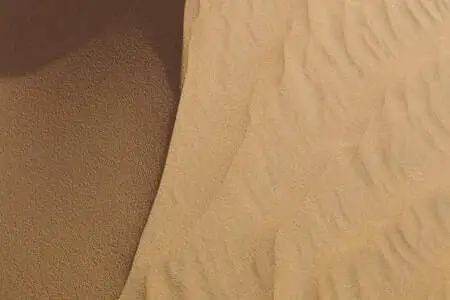It’s important to know if sand is a good insulator of heat because if you are looking for an inexpensive way to insulate your home, it may be the most cost-effective solution.
Sand can help to maintain the temperature in your house, and it does this by creating a barrier between two different areas that are at different temperatures. However, due to the low R-value of sand, it will often not be approved by building officials for habitable dwellings.
When you’re renovating a property, questions always arise about what kind of insulation to use. Many people think that sand is an odd choice for insulation because they don’t know what it does or how it works. But if you want something natural and inexpensive, then sand can be used instead of traditional insulation like fiberglass batting or spray-in foam to provide some amount of thermal performance without any chemicals involved.
Sand was used as an insulating material in ancient times when Egyptians built their pyramids with large walls made out of mud, straw, and sand.

If you are looking for added insulation to an outbuilding in your home, there are several reasons to consider using sand as part of the solution instead of traditional insulation like fiberglass batting or spray-in foam. It’s natural, affordable (especially if you live near a beach), easy to work with, and effective at stopping heat transfer between two different temperature zones inside your house. So why not use something that has been used for thousands of years?
What is the R-value of sand
R-value is a measure of the thermal resistance, or insulating power, of insulation. It’s measured in terms of how well it can resist heat flow and is usually expressed as “R-value per inch.” The higher the R-values are for your insulation, the better it will protect you from heating and cooling costs.
It’s important to note that different types of insulation materials have different R-values and that not all R-values indicate equal levels of protection against heat loss or gain. So let’s take a look at the sand as an example to see what its r value may be.
The r-value of sand is too low to be used for insulation. Sand doesn’t have a high enough rating to provide sufficient heating during winter months, hence – as mentioned earlier – it cannot be used inside habitable dwellings.
The thermal conductivity, K, of coarse dry sand varies between 0.10 – 0.20 W/mK. Converting to Imperial units = 1.7 Btu.in/ft2.oF.hr. R-value is the reciprocal of conductivity therefore, the R-value of coarse dry sand = 0.58 ft2.oF.hr/Btu.in.
Not to be mistaken for R-rating, however, as many homeowners are often confused about the difference between an R rating and an r-value. An R rating is a measure of thermal resistance, while the R-value measures how well insulation resists heat flow in units of BTU’s per hour per square foot (BTUs/hr/ft2). The higher the number on this scale, the better it insulates against heat flow.
Is sand a conductor or insulator of heat
Heat energy moves in waves, and when it reaches a material, it either transmits through or gets reflected off that material. Historically, sand is one of many materials that have been used as an insulator to heat. As a conductor to heat, however, sand does a pretty bad job.

So when sun rays hit, all the heat energy is absorbed within the sand, the heat then remains there for a few millimeters. This is what makes sand a bad conductor of heat.
Sand works well as an insulator of heat because of the tiny particles that make up sand, and when they get compacted together into an enclosed space as you find in concrete or brick, it creates something called thermal mass which will retain heat energy quite well over time. This happens even if there’s no external heat source involved.
Downsides to Using sand for thermal insulation
Sand is often an alternative to foam insulation in homes. But, there are some downsides for this option. Sand does not provide the same level of thermal performance as polyurethane foam insulation and it can be more difficult to install than other types of insulation.
Sand can’t be used alone because the moisture from the air will cause it to clump together and not provide any insulation.
The sand needs to first be dried and then combined with other materials. This can make it more difficult for those who are looking to install insulation on their own at home because they need a lot of knowledge about the science behind this type of material as well as how to properly mix, dry, and prepare the sand before installation.
Finally, if you don’t fill your home’s wall cavities (such as when using rigid board) before installing the sand it will settle over time which reduces its effectiveness at blocking air transfer through walls and ceilings.




